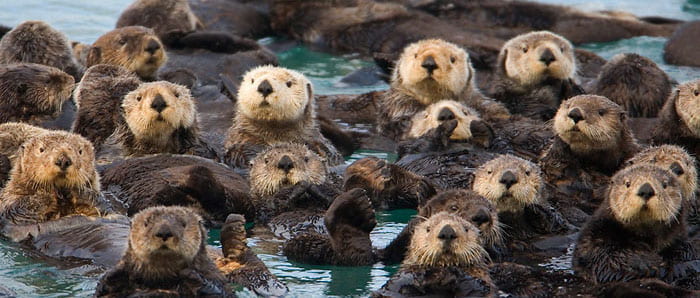From National Geographic, a short well-done article on our recent sea otter – carbon pub.
When hungry sea otters whack spiky urchins against rocks on their chests, the mammals may also be striking a blow against global warming.
By preying on urchins—which themselves devour greenhouse gas-absorbing kelp forests—the sea otters encourage the plants to flourish.
The result? An otter-assisted kelp forest “can absorb as much as 12 times the amount of CO2 [carbon dioxide] from the atmosphere than if it were subject to ravenous sea urchins,” according to the study, published Friday in the journal Frontiers of Ecology and the Environment.
Based on a new analysis of 40 years of data on both otters and Pacific kelp forests off Alaska and Canada, the study concludes that “otters ‘undoubtedly have a strong influence’ on the cycle of CO2 storage,” if only in their local environments.
So are sea otters the new global warming “warriors,” as some headlines have it?
Not exactly, said Jeffrey Dukes of the Purdue Climate Change Research Center in Indiana.
The otter-induced increase in CO2 absorption is “relatively inconsequential in terms of the big picture of climate change,” said Dukes, who wasn’t part of the study. But, he added, it’s “an interesting study identifying how dramatically a predator can alter the cycling of carbon in an ecosystem.”
Study co-author Chris Wilmers, a biologist at the University of California, Santa Cruz, agreed that the offset is “unlikely to have a big effect on global warming” worldwide.
But while otters alone can’t do the job, such seemingly incremental, natural advantages may become ever more important as we look for ways to blunt climate change’s impacts, according to study co-author James Estes, also of UC Santa Cruz.
“The general phenom in which the interactions between species are linked to the carbon cycle,” he said, “is going to be very important.”

